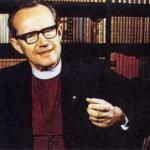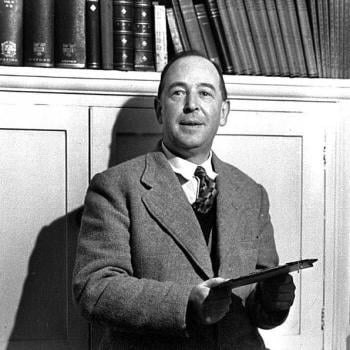Summer is a time for reading. Light reading, especially. That is to say, fun reading. (See Monday’s post). But if you are like me, even fun reading needs to have at least some substance; otherwise, it fails the requirement of stimulation.
In our post If James Bond Became a Lutheran Pastor, we discussed the Pastor Stephen Grant novels, thrillers about a CIA agent who enters the ministry but still gets called upon to do violent battle against global evildoers. The author, Ray Keating, is an LCMS Lutheran and an economist by trade. In fact, he recently published a lively primer on the subject entitled The Weekly Economist: 52 Quick Reads to Help You Think Like an Economist.
But fans of his Stephen Grant books will be happy to learn that he has started another series of thrillers, The Alliance of Saint Michael novels. These novels, set in the 1930s, are about a shadowy organization that seeks to defend Christianity from the attacks then underway from both Communism and Fascism. The main characters are a Lutheran pastor, a Catholic priest, and an Anglican laywoman, plus a supporting cast of German Lutherans, Russian orthodox, and other operatives taking on Stalin’s apparatchiks and Hitler’s brown shirts.
In the inaugural novel, Cathedral, we learn the backstory of the characters and how they came together, first into an academic think tank, which then added a secret operational arm–named after the archangel known for warring against the devil–to carry out the action required by their mission.
With lots of depression-era local color, from the automat in New York City to the retired Calvin Coolidge, the story in this first book of the series centers on the efforts to save the lost manuscript of a translation of the Bible into Russian. It has been discovered by an orthodox priest, who has hidden it in the Cathedral of Christ the Savior, which is being looted and demolished by the Soviets. (That part is true.) The Alliance of Saint Michael has to infiltrate the Soviet Union, find the manuscript, and get it out of Russia, in hopes of publishing and distributing it when the time is right.
The translation is described as the work of Johann Ernst Glück (1652-1705), a Lutheran theologian who lived in present-day Latvia and translated the Scriptures into Latvian. I could find no reference to a lost translation into Russian, so I assume that part of Keating’s novel is fictional, but I was glad to learn about Glück. [UPDATE: Thanks to SKJam for this: “Per our friends at Wikipedia: ‘Tsar Peter the Great felt that the Russian people needed a Bible in the vernacular and authorized Pastor Johann Ernst Glück in 1703 to prepare such an edition. Glück died in 1705 and nothing is known of his work.'”]
Not only was his theological and translating work significant, Pastor Glück had a significant impact on history. He took into his home a three-year-0ld peasant girl whose parents both died of the plague. He raised her in his household as a foster child. To make a long story short, she eventually found a position as a servant girl in the household of a Russian officer. Eventually, she caught the eye of Peter the Great, Czar of Russia, who fell in love with her. She became his mistress (I’m not saying she is the best role model), but then the Emperor Peter shocked the world by marrying her. She converted to Orthodoxy (again, not the best role model), whereupon Peter made her Catherine I, the Empress of All Russia. After Peter died, she actually ruled the entire realm, until her death two years later.
Catherine I is not to be confused with Catherine the Great, a Lutheran princess who also converted to orthodoxy and deposed her incompetent and brutish husband Peter III, the grandson of Peter and the first Catherine (a scion of one of their 12 children). But Catherine I had a great influence on her husband, including pushing the reform that she herself embodied, bringing in commoners to the government, as opposed to relying on the aristocracy. She may be, in fact, the greatest example of social mobility in history. She deserves a historical novel of her own. [UPDATE: Thanks to Amaryllis for pointing out that she already has her own series, evidently in the genre of historic romance.]
At any rate, many of you will enjoy Cathedral and the new series that it launches. It isn’t for everybody–there is some obscenity, non-pornographic sexual references, and lots of violence–and some readers dislike thrillers on principle. But Ray Keating is working with an explicitly Christian moral and theological framework, demonstrating the freedom that Lutheran novelists have in their vocation.
Photo: Ray Keating via Amazon.com














